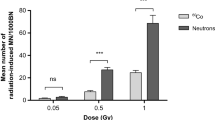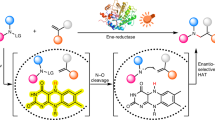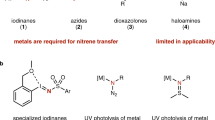Abstract
ANNEALING of the chemical effects of nuclear recoil in solid substances by ionizing radiations1 and by ultraviolet2 and visible3 light is well known. In the case of chemical radiation damage, evidence for the existence of radiation annealing, necessarily indirect, is provided by the observation that the rate of damage generation decreases with increase in the radiation dose. The effect is particularly pronounced in lead nitrate for which the steady state nitrite yield under gamma-irradiation, for example, is only about 2 per cent4,5. There is no record of photo-annealing of chemical radiation damage in the literature. We have observed the recombination of damage fragments in lead nitrate by light in the visible region.
This is a preview of subscription content, access via your institution
Access options
Subscribe to this journal
Receive 51 print issues and online access
$199.00 per year
only $3.90 per issue
Buy this article
- Purchase on SpringerLink
- Instant access to full article PDF
Prices may be subject to local taxes which are calculated during checkout
Similar content being viewed by others
References
Williams, R. R., J. Phys. Colloid Chem., 52, 603 (1948).
Claridge, R. F. C., and Maddock, A. G., Trans. Faraday Soc., 57, 1392 (1961).
Machado, J. O., Machado, R. M., and Vargas, J. I., in Chemical Effects of Nuclear Transformations, 2, 195 (IAEA, Vienna, 1965).
Maddock, A. G., and Mohanty, S. R., Disc. Faraday Soc., 31, 193 (1961).
Mohanty, S. R., J. Sci. Indust. Res., 21A, 247 (1962).
Author information
Authors and Affiliations
Rights and permissions
About this article
Cite this article
MOHANTY, S., NAIR, S. Photo-annealing of Chemical Radiation Damage. Nature 215, 1476–1477 (1967). https://doi.org/10.1038/2151476b0
Received:
Issue date:
DOI: https://doi.org/10.1038/2151476b0



